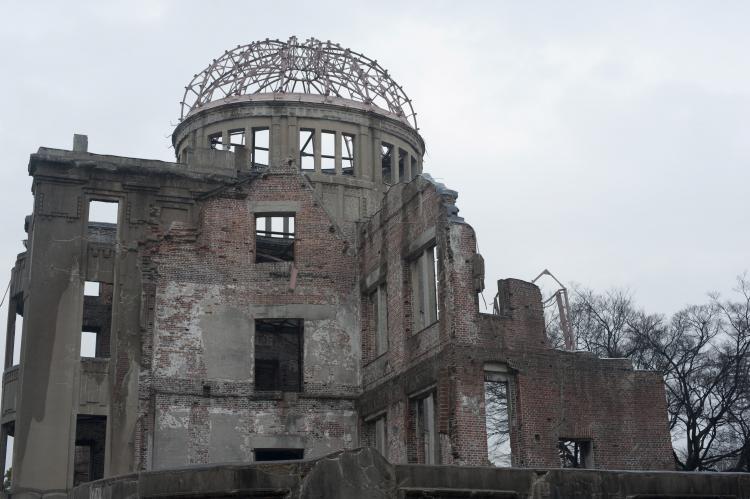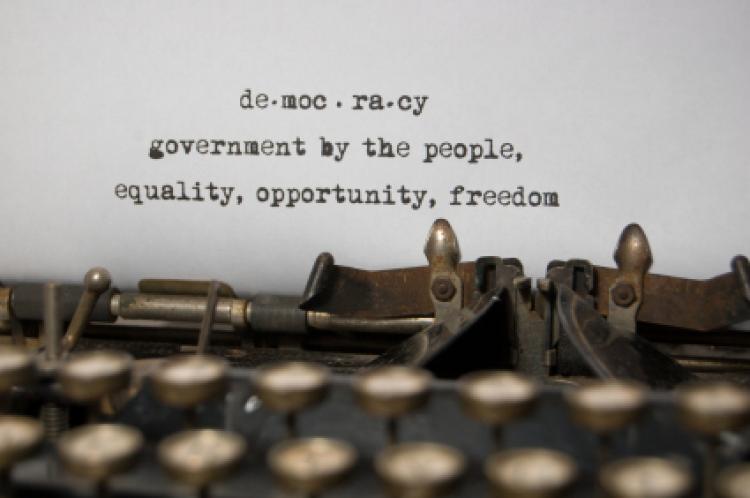On the first day of class at Georgetown University, the 63-year-old freshman left her dorm room in Copley Hall, carrying highlighters and a legal pad. Walking down the hallway, her gray-blond dreadlocks swinging, her heavy bracelets chiming, Mélisande Short-Colomb gave her schedule a quick look. Today she’d attend the “Problem of God,” a course on the existence and nature of God. And tomorrow would bring the class she’d been waiting for: African American Studies.It was a subject with which Short-Colomb had recently become more acquainted. The history of her own family was the history of African Americans, and, she has learned, proof of how deeply the roots of slavery go in America’s most prominent institutions and universities.At a time when the nation is undergoing a tumultuous reckoning with the darkest chapter of its past, when protests have turned deadly in Charlottesville and college students across the country are demanding the renaming of buildings linked to slavery, Short-Colomb was quietly coming to terms with her own place in that sweep of history.Her ancestors were among the 272 slaves Georgetown priests had sold in 1838 to help pay off the university’s debts during a financially turbulent time. Now it was nearly two centuries later, the truth of what happened was finally out in the open and here she was, a member of her family, again in Washington but under very different circumstances.The university has granted legacy status to the slaves’ descendants as part of an effort to atone for the sale of their ancestors. But only two have come so far. One is 20. The other, the oldest degree-seeking undergraduate at Georgetown, is Short-Colomb.
The university has granted legacy status to the slaves’ descendants as part of an effort to atone for the sale of their ancestors. But only two have taken up the offer so far. One is 20 years old. The other is Mélisande Short-Colomb. (Marvin Joseph/The Washington Post)
She had completed so much of life — she had become a mother, grandmother, professional chef — but increasingly she was feeling like a piece was missing. Did she owe something to the slaves who were sold and the children who followed, and would joining with the university that began it all bring some sense of resolution?
Hoping her experience at Georgetown would help answer this question, she walked into the Walsh Building. The elevators weren’t working, so she climbed the steps beside scores of younger students — “kids,” Short-Colomb described them — before stopping to catch her breath. “I’m not 18 anymore,” she said.
She arrived at Room 496. Most of the students were already inside. She found a seat near the front, took out her legal pad and quietly waited for class to begin.
Oral history, then the truth
Short-Colomb had heard the story her whole life, and in the summer of 1980, as she sat beside her grandmother in the family house in New Orleans, she listened once more. A local newspaper reporter was doing a story on the volunteer work of her maternal grandmother, Geneva Smith, who was saying their family wasn’t from Louisiana but Baltimore. And they had been free.
“My great-grandmother was named Mary Ellen Queen,” Smith told the reporter, according to the article. “She was beautiful, too. Even when she was old, she was a tall, beautiful, dark-skinned proud lady. Before the Civil War ended, the Queen family gave my great-grandparents their freedom, and they came down here to Terrebonne Parish because they heard that there was farmland. She told me how she came on a flatboat with a baby in her arms, and she remembered how the alligators would follow the boat all the way.”
“I heard all the stories,” is how Smith explained it.
But the stories never made much sense to Short-Colomb. Why had her family been freed? And why would they, a recently emancipated black family, ever travel to Louisiana to work land that was dominated by slaveholders? For Short-Colomb, there had never been any way to answer those questions. It’s unusually difficult for black families to trace their roots. African Americans weren’t listed in census records until 1870. So Short-Colomb, who had recently dropped out of college and become a chef, reconciled herself to never knowing. She told her children the same story she had been told, always wondering which details were missing
Decades would pass before the details started filling in last year. Her grandmother was dead now. So was her mother. It was just Short-Colomb that day last summer, reading a Facebook message, asking a simple question that would turn out to have a very complicated answer: Was she related to a woman named Mary Ellen Queen?
The woman writing the message was Judy Riffel, a genealogist who had been hired by something called the Georgetown Memory Project. Short-Colomb had read about it in an articlein the New York Times, which told of the story of the Jesuit priests’ sale of 272 slaves. She recalled feeling sad for the slaves. Now she was being told that her own family had been a part of that history, too.
She couldn’t sleep that night. She felt nauseated, thinking about all of the stories her grandmother had told her that hadn’t been true. Mary Ellen Queen hadn’t been freed. She had been sold. And the people who did it were the same priests who helped make Georgetown one of the nation’s most prestigious universities. She arose the next morning feeling better, with a purpose: She provided a DNA sample to the Georgetown Memory Project and connected with the rest of the descendants.
“I felt okay with the history of my family as I had it,” she wrote last September to Richard Cellini, an alumnus of Georgetown University and the founder of the memory project, with whom she developed a quick rapport. “I had heard the story of . . . [ancestor] Abraham Mahoney and Mary Ellen Queen being sent south as young adults. . . . So, that’s my pedigree line as I know from familial oral histories.”
There was now so much more to know. She wanted to know Washington and Georgetown and how her family had come to be owned by Catholic priests. But how could she find that out? She was all the way down in New Orleans, “extremely underemployed,” as she put it, earning her keep at a friend’s house by caring for the friend’s elderly mother.
In January, Cellini sent her an opinion piece in the New York Times, describing Georgetown’s decision to provide legacy status to descendants as “making reparations.” The article angered Short-Colomb. Was that gesture meant to compensate for all that had happened?
“I don’t like those people, and we have unfinished business,” she said. “I might [be] ready to . . . exercise that ‘preferential legacy status.’ ”
“Actually, I think you SHOULD go to Georgetown,” Cellini said.
“I would,” she said.
“Someone has to be the first,” he said.
“I’m a million years out of school,” she said. “We should have a test case from the descendant group. Perhaps it should be a brilliant 17-year-old!”
Suddenly unsure, she talked to her roommate, Marcia Dunmore, who encouraged Short-Colomb but was apprehensive nonetheless. “You’re talking about a 60-plus-year-old person becoming a freshman, and just the idea of that is daunting, the social aspect of it,” Dunmore recalled thinking at the time.
Cellini soon responded to Short-Colomb’s note.
“It needs to be someone with wisdom, strength, imagination, intellect, vision and courage. Does that sound like a 17-year-old to you?”
“It feels right,” she said, finally agreeing. “I want to go back to the source of my family in America.”
So she sat down and, feeling anxious and unsure, began an application to enroll as a freshman at Georgetown University.
“My story begins simply,” she typed, and for the first time, began writing the real one. “My family was sold by the Society of Jesus of Maryland in 1838.”
The purpose of an education
Nearly 200 years later, Short-Colomb was sitting in the “Problem of God,” looking around the classroom. There were young women with long black hair. There were young men in polos and leather shoes. There was the professor, a middle-aged white woman, who said, “Let me see here, who is here?” and started going through the roll call.
Short-Colomb wanted to be a resource to students like these, educate them on how slavery had shaped Georgetown, but she already knew there would be many with whom she would never completely bond. In her week on campus, there had already been times when she felt she didn’t quite fit in. Like when a young white student disparaged Black Lives Matter in one of her orientation sessions, and she wondered what sort of household he had come from. Or when a young woman in her dorm had asked her, “And who are you?” and she had felt out of place, alone in her dorm room. Or when an English professor had given a tour of campus and mentioned the sale of the 272 slaves, but in her mind didn’t probe its moral implications deeply enough.
A university spokesman said, “Slavery was discussed in depth.”
But that was then, this was class and she wanted to do well, so she focused on what the professor was saying. She asked students to read a recent article in the Atlantic magazine titled, “Have Smartphones Destroyed a Generation?” which explored the ramifications technology has had on millennials.
“They’re talking about you, and the answer is ‘Yes,’ ” the professor joked, and the younger students laughed.
Other students started asking questions, but not Short-Colomb. She stayed quiet, trying to absorb an experience she didn’t yet know how she would apply. She knew she wanted to study African American history, but would that be her major? And if so, what would she do with it? She would be 67 — past retirement age — when she finally graduated, and what would come next?
Maybe, she thought, she would stick around. Maybe she would go on to get a PhD. Maybe she would be one of those “career students” she sometimes heard of. Maybe this was it. Her family had finally returned to Georgetown, and she was home.
Class was ending, and Short-Colomb glanced at tomorrow’s reading assignment, “The Death of Reading.” She gathered her things and walked outside, seeing what the sale of her family had ultimately helped accomplish: the gothic buildings, the coiffed gardens, students walking in every direction.
“Look how beautiful this view is,” she said quietly.
She reached her room on the fourth floor of the dormitory and noticed the time. It was already afternoon. The first day of class was over, but it wouldn’t be long before tomorrow. She had so much reading to get through before then, and it was time to get to it.
SOURCE
My prayers and joy go out to Ms. Short-Colomb.
I hope that the WaPo keeps tabs on her progress and that in the interim, Ms. Short-Colomb would please keep a journal of her days during her time at Georgetown University.
A daily log of getting up, preparing for class, what transpired that day and how it all turned out would be a wonderful page-turner to me.
Much success to you Ms. Short-Colomb and the 20-year-old who like you decided to take part in this legacy program. It can never begin to make up for what your ancestors experienced, but, hopefully this would be of great benefit to you both.
Both of you are embarking hopefully on a magnificent journey.
On the other hand, all of the enslave descendants have a legal right to reparations from all of the free labor stolen from their Black ancestors.
Free education my ass.
Got to be a just monetary compensation—all other crappy free classes, etc.—do nothing to rectify the abominations done to Ms. Melisande Short-Colomb and the 20-year-old student’s ancestors.
Get up off your ass Georgetown University and pay up.
Until you do, you are still a slave-holding university no matter how much you run from the legacy of your racist-Jesuit-perverted history.
SALUTARE.





























